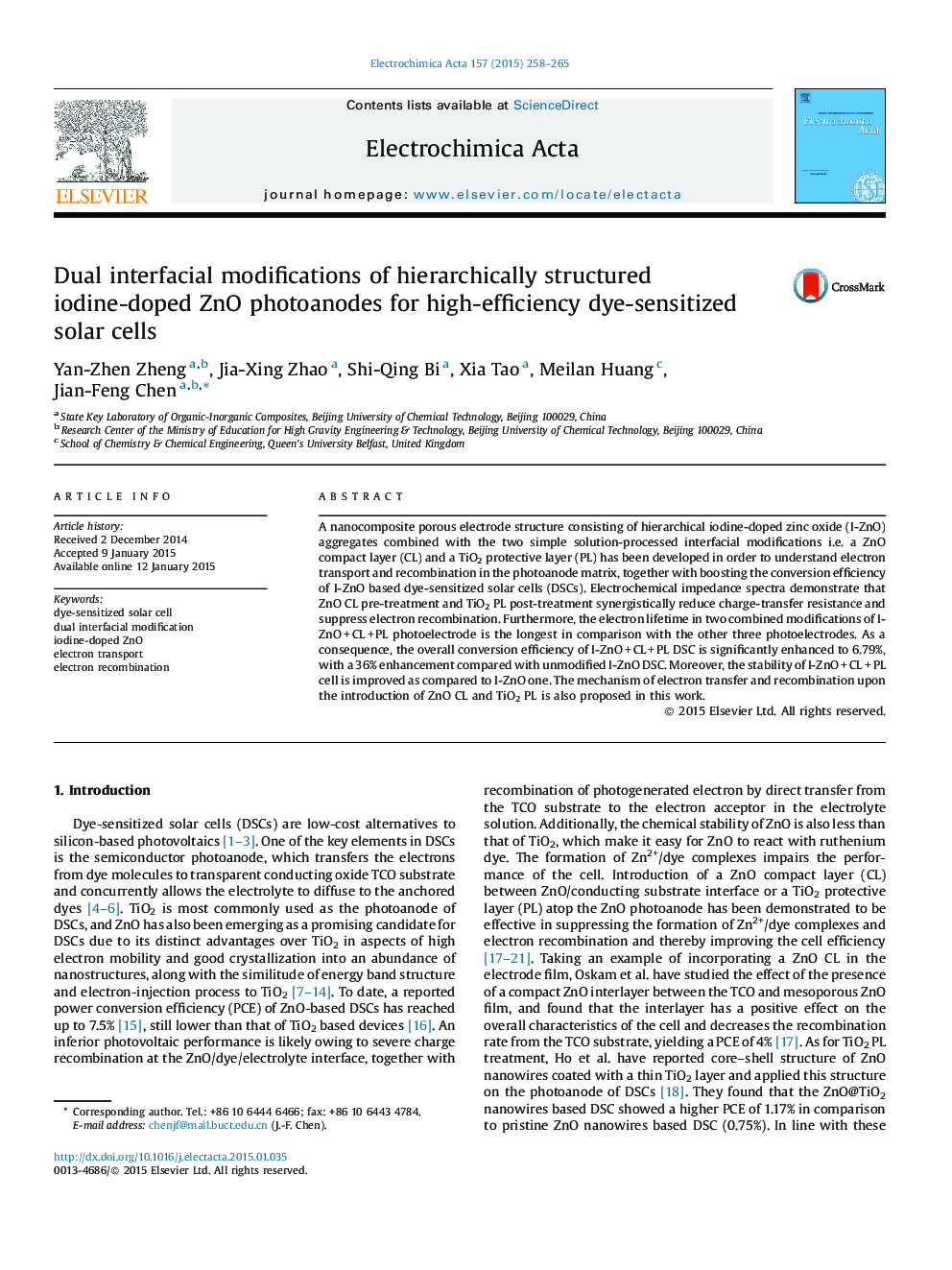| کد مقاله | کد نشریه | سال انتشار | مقاله انگلیسی | نسخه تمام متن |
|---|---|---|---|---|
| 184639 | 459579 | 2015 | 8 صفحه PDF | دانلود رایگان |

• Two simple solution-processed interfacial modifications were applied to I-ZnO DSCs.
• ZnO CL suppresses electron recombination by reducing back electron transfer.
• TiO2 PL retards Zn2+/dye complex formation and inhibits electron recombination.
A nanocomposite porous electrode structure consisting of hierarchical iodine-doped zinc oxide (I-ZnO) aggregates combined with the two simple solution-processed interfacial modifications i.e. a ZnO compact layer (CL) and a TiO2 protective layer (PL) has been developed in order to understand electron transport and recombination in the photoanode matrix, together with boosting the conversion efficiency of I-ZnO based dye-sensitized solar cells (DSCs). Electrochemical impedance spectra demonstrate that ZnO CL pre-treatment and TiO2 PL post-treatment synergistically reduce charge-transfer resistance and suppress electron recombination. Furthermore, the electron lifetime in two combined modifications of I-ZnO + CL + PL photoelectrode is the longest in comparison with the other three photoelectrodes. As a consequence, the overall conversion efficiency of I-ZnO + CL + PL DSC is significantly enhanced to 6.79%, with a 36% enhancement compared with unmodified I-ZnO DSC. Moreover, the stability of I-ZnO + CL + PL cell is improved as compared to I-ZnO one. The mechanism of electron transfer and recombination upon the introduction of ZnO CL and TiO2 PL is also proposed in this work.
Figure optionsDownload as PowerPoint slideWe have utilized dual interfacial modifications i.e. ZnO CL and TiO2 PL to probe and elucidate the inherent beneficial characteristics of an I-ZnO microstructure. ZnO CL has been demonstrated to be able to suppress electron recombination by reducing back electron transfer from FTO to electrolyte. TiO2 PL as a barrier retards the formation of Zn2+/dye complexes and also inhibits electron recombination by decreasing electron trap sites on I-ZnO surface. As a result, a distinguished PCE of 6.79% has been attained for I-ZnO + CL + PL DSC, with a 36% efficiency enhancement in comparison to unmodified I-ZnO cell (5.01%).
Journal: Electrochimica Acta - Volume 157, 1 March 2015, Pages 258–265